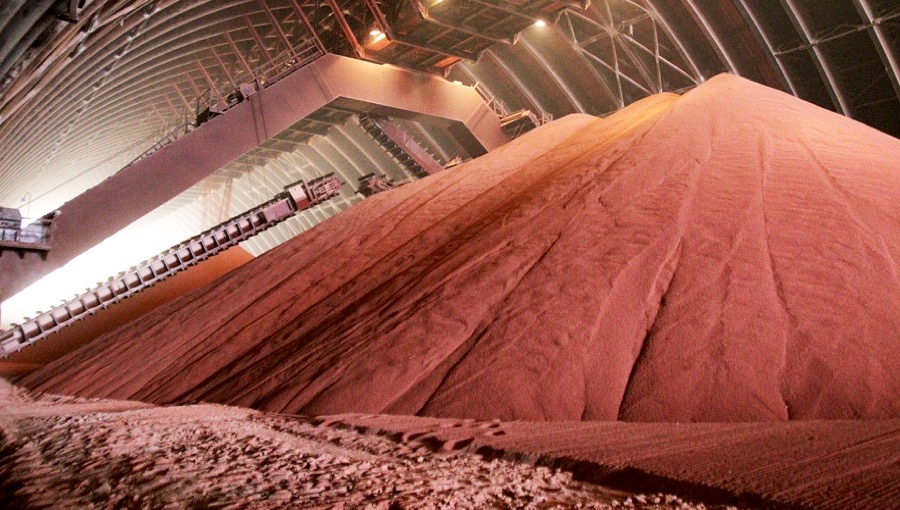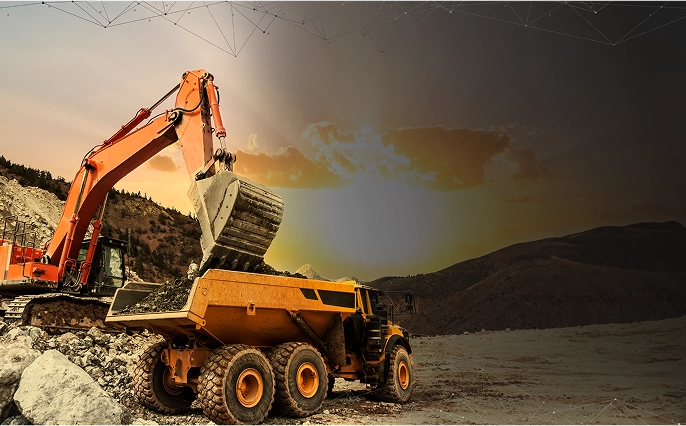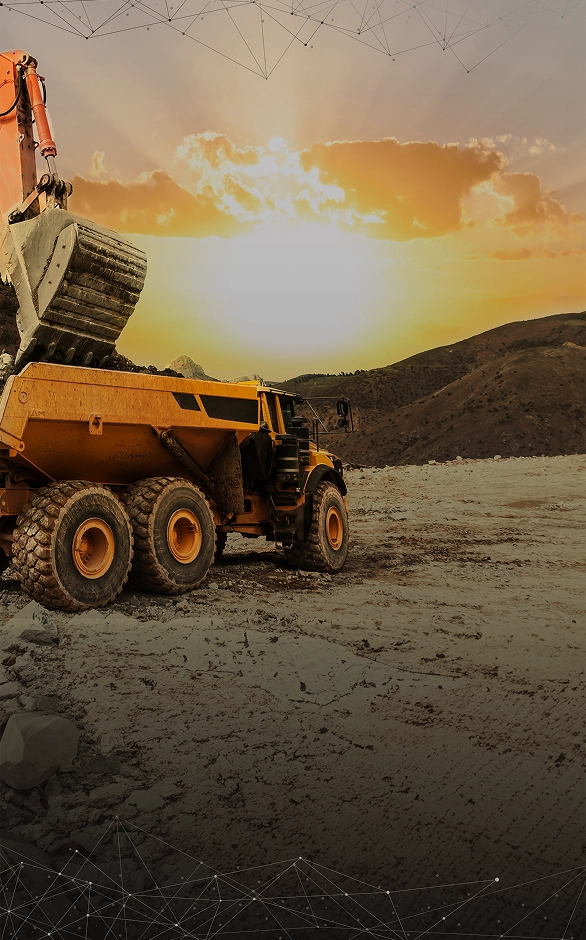
It hasn’t been much fun for base metal producers in recent years. As Karl Simich, Managing Director and CEO of Sandfire Resources, puts it bluntly, the price of copper has made the business of mining the stuff “hard work.”
Low oil prices and weak currencies for ex-USA miners offers some reprieve. But they have only softened the blow of copper prices slogging near US$2/lb in recent quarters. “They have been well and truly overshadowed by base commodity prices,” Simich, an Australian veteran of the resource sector, says.
It’s been especially painful for the big base metal miners with heavy debt loads and juniors with higher cash costs.
But Sandfire, an Australia-based copper miner, is something of an exception in this weak market. It hasn’t sought — or had to seek — cover while some other miners are forced to ignore opportunities in slashing costs and focusing primarily on debt repayment. Sandfire finds itself in relatively better shape.
It’s an interesting place to be. In growing a copper producer in this terrible market, Simich says his team remains inquisitive in the search for new assets while it advances a pair of exploration projects and drives production at its DeGrussa copper-gold mine in Australia.
“And you might say, ‘Well, we’ve all been affected by the commodity price,’” Simich says. “But in the relative sense, our purchasing power at $6/share might be better than three years ago when our share price was sitting at $9. What we could purchase with $9 was much less than what we could buy today with a $6 share price.”
EMERGING MINER
Sandfire, as producer, is one of those rare junior breeds that can legitimately claim to have discovered and quickly put into production, successfully, a copper-gold deposit. The DeGrussa copper-gold mine is its chief asset. Sandfire discovered the deposit back in 2009 after ballsy — yet diligent — exploration drilling in a region of Australia not well known for volcanogenic massive sulphide deposits, about 1,000 kilometres northeast of Perth.
The discovery was a case of fortuitous re-evaluation of field results. The Sandfire team were looking for oxide gold. But they started to see signs of copper and sulphides and wondered if there might be something deeper. Extending their budget back in the early 2009 — an aggressive gambit amidst an acid market for juniors just after the financial crisis — they drilled deeper and ultimately found a VMS deposit in a complex structural setting.
“And there’s nothing more powerful than making an organic discovery,” Simich says. “The first hole at DeGrussa basically discovered a $7 billion in-situ resource at that time. That is materially a game changer for anyone.”
Sandfire has since brought the deposit to production and resources stand at 10.6 million tonnes @ 3.5% copper and 1.3 g/t gold (December 2014). In its fourth year of commercial production, Sandfire has paid much of its debt down (~zero net debt now).
And, meantime, it has continued exploring and acquiring.
UNDER DEVELOPMENT
Two projects occupy Sandfire’s development focus. One is a recent discovery, the Monty deposit, near the DeGrussa mine (70% Sandfire/30% Talisman Mining). It’s a relatively small VMS deposit, also in a very complex structural setting. But the grades have been stellar, including intercepts up to 22 metres @ 34.4% copper, which it hit late last year.
It seems the deposit – whose size may be modest so far – is destined to add mine-life to DeGrussa, about 10 kilometres west of Monty (the new deposit is also referred to as Doolgunna.) A first resource is forthcoming around April of this year.
If the tonnage may not be on the scale of DeGrussa at this point, the tenor of copper mineralization will certainly catch the eye. As Simich puts it, “You go, wow. When was the last time you found those grades?”

In Monty, Simich is perhaps just as excited about what hasn’t been found. Monty shows that the ground beyond DeGrussa is undoubtedly prospective for additional finds for a patient explorer willing to drill under cover in heavily faulted rock.
Monty may be relatively small. “But do you think it’s an opportunity for repetition of those material and lenses in and around what is a very, very complicated and busted-up and structurally complex situation? The answer is yes,” he says.
So, much of Sandfire’s exploration resources are focused on just that, exploring on the best-looking targets in the Monty and DeGrussa environs.
ENTER NORTH AMERICA
Beyond Australia, Sandfire has also homed in on another high-grade copper deposit called Black Butte. The copper project, discovered some decades ago, is in Montana, USA, and owned by Tintina Resources (TAU-V).
It’s a project that caught the eyes of Sandfire’s chief business development officer Bruce Hooper, now also the President and CEO of Tintina.
In a recent interview, he recalls being impressed by the core when he first caught sight of it at PDAC years ago now, and then by the project itself – and its chances for development – after trips to Montana, where he is now based.
Sandfire first invested in the junior back in 2014, in a private placement at $0.20 giving it an initial 36% stake in the company. Then late last year it grabbed an opportunity to get firmly in the driver’s seat, picking up a large stake in the company then owned by Quantum Partners, a George Soros fund. Sandfire bought 47 million Tintina shares @ $0.0831/share, boosting its interest to 57%.
Simich is a numbers man and in Black Butte he likes the risk/benefit in the acquisition that cost about three cents a pound or less. “I look at that and say, ‘That’s a good investment proposition for the business into a known resource.'”
Clearly, permitting in a region with strict environmental regulations and often vociferous anti-mining groups — we’re talking Montana here — is one of the project’s toughest challenges. (And a higher copper price would be nice too.)
But Simich sees the permitting hurdle as surmountable. He stretches some experience-muscle here.
“We have developed mines in sensitive environments,” he notes, including New Zealand where there are many mining industry naysayers. He also points to sustainability chops Sandfire has developed at DeGrussa, where the company is in the midst of hooking up much of the mine’s power to a new solar grid.
Simich is optimistic as Black Butte heads into permitting. Its mine plan application is before the state, to be checked for completeness, and thereafter it is to go through an environmental assessment at the state level. The project is on private land.
“To be brutally honest, I would be quite surprised if ultimately after going through a thorough education process, if a permit is not forthcoming for the development of that project,” Simich says.
They are planning for a mine with a clear focus on lowering environmental impact. Among components, Tintina proposes cemented tailings. It’s a more expensive feature than a traditional tailings pond and increases the capital costs. But it’s critical in showing Montana regulators and citizens the project won’t have a major environmental impact.
Hooper weighs in. “The design, especially with the cemented tails, really negates all of the concerns over water,” he says. “And to be honest, mining worldwide is all about water. Whether you’ve got too much of it or how you’re protecting it. And we believe that our studies and work – and especially the cemented tails – are of the highest quality and that there really are no issues.”
Which isn’t to say there won’t be opponents of the mine. What mine in the U.S. doesn’t face some stiff opposition? But the design and community support is strong enough to convince regulators the project is acceptable per Montana regulations, Hooper believes.
Assuming it gets to production, Black Butte stands to be a solid producer.

As in Australia, grade sets Black Butte apart from many other undeveloped copper deposits. Simich reckons it’s probably in the top 10 highest-grade copper deposits that aren’t developed, in the world. Measured and indicated resources are sizeable: 15.7 million tonnes grading 3.4% Cu. The resource comprises flat-lying lenses that would be mined underground.
“It appears to have no impediments from a practical, geochemical, metallurgical, scientific or environmental reason to inhibit or to preclude it from being developed,” Simich says.
It’s conceivable Sandfire might want to increase its stake in Tintina. But Simich makes it clear he isn’t gunning to consolidate if other shareholders are happy to drive Black Butte development alongside Sandfire.
“We’re not looking to try to wrestle any more from anyone here or there,” he says. “If opportunities arise and we think it’s worthwhile and it sits within our mandate and we’ve got the capacity, sure we will continue to move the thing forward.”
PAY-OFF FOR RISK TAKERS
Meantime, don’t expect Sandfire to rest on its laurels. Both Simich and Hooper note an increase in opportunities on the market, in part because owners are more open to outside interest.
In this, Simich and his team possess the critical combination of attributes that drives success in the business of exploration: Patience and an appetite for risk – which means a willingness to lose.
“We will take risks. And we will fail,” he says.
Indeed, Simich notes Sandfire recently invested in a company drilling a large copper porphyry. They found some interesting results.
“But we didn’t succeed in making a large copper-porphyry discovery,” Simich says. “And that’s it.”
“That’s the nature of the beast. You can’t go looking for game-changing new geological discoveries if you’re not prepared to take the risk.”
Sandfire Resources (ASX:SFR)
Marketcap: ~A$1B
Cash: ~A$51m
The article is for informational purposes only and is neither a solicitation for the purchase of securities nor an offer of securities. Readers of the article are expressly cautioned to seek the advice of a registered investment advisor and other professional advisors, as applicable, regarding the appropriateness of investing in any securities or any investment strategies, including those discussed above. The information contained in the reports have been compiled from sources CEO.CA believes are reliable; however, CEO.CAmakes no guarantee, representation or warranty, expressed or implied, as to such information’s accuracy or completeness. The views expressed are those of the author and not necessarily CEO.CA or Pacific Website Company Inc., CEO.CA’s parent. At the time of publication, Tintina Resources is a Pacific Website Company Inc. client and CEO.CAsponsor. All opinions and estimates contained in the reports are based on assumptions the author believes to be reasonable as of the dates of the reports but are subject to change without notice. Either the author, Pacific Website Company Inc. or its consultants may from time to time hold or transact in the securities mentioned.




Comments